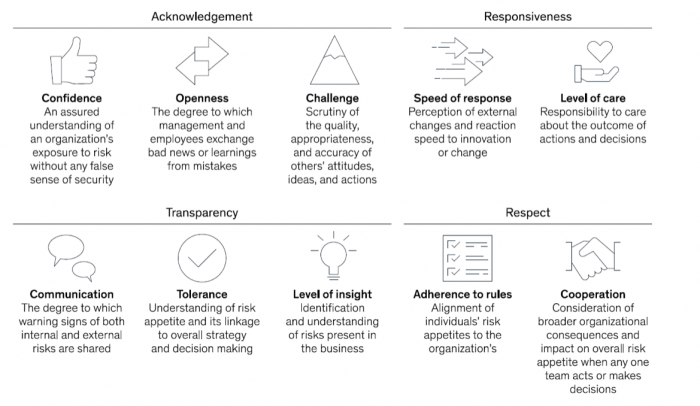3 Ways to Improve Organizational Resiliency in the Post-Pandemic Paradigm
While most don’t hold the title, each of us is a personal risk manager.
We choose to avoid or embrace various levels of risk and also figure out how to best respond when thrown the unexpected curveball or crisis. Change and discomfort become the default, and our personal resiliency is flexed and reinforced daily.
In our work roles, we often lose resiliency, becoming more rigid in our business practices and less malleable to change.
We often ‘stay in our own lane’ for fear of taking a career-altering risk or simply not having the fortitude to navigate corporate red tape. Sometimes, the payoff just isn’t there. Most times, our organization’s culture is the culprit.
As an industry built on risk aversion and mitigation, we now find ourselves in need of normalizing the very discomfort we’ve erected business cultures to avoid.
Why? Because unpredictable risks and catastrophes are predicted with much greater frequency in the future.
Whether it’s macro-level uncertainty (such as climate change, global cyber security risk and newly morphed disease) or micro industry-level uncertainty (such as long-tail COVID-19 claims, the impact of AI on the claims professional’s role and how the talent crisis will play out), we must become more comfortable with uncomfortable things.
Past performance will no longer predict future success in workers’ compensation. Resiliency will.
The Harvard Business Review defines corporate resiliency as “a company’s capacity to absorb stress, recover critical functionality, and thrive in altered circumstances.”
Resiliency is important because it is an indicator of how well a company will navigate through a crisis, as well as daily challenges. Successful companies measure and build risk cultures that allow them to outperform peers when faced with adversity and emerge stronger.
These cultures stretch, bend, and accelerate while maintaining quality. They also allow employees to take some risk without fear of retribution.
According to McKinsey & Company, “true resilience stems from a diversity of skills and experience, innovation, creative problem solving, and the basic psychological safety that enables peak performance.”
So how do we embed resiliency and future-proof our organizations before the next internal or external shock? How do we normalize change and discomfort as a pathway to organizational adaptability, growth, and success? Briefly, here are three key strategies.
1) Reward Employee Risk Taking
First, we must encourage, support, and reward employee risk taking.
This includes asking employees to take up new behaviors that may seem inherently risky themselves, such as challenging a manager’s idea in a meeting, offering one’s own idea that might be subject to feedback, being transparent about a process that’s not working, or admitting a mistake or failure.
These are all situations that can be uncomfortable, they are also all situations that can lead to needed course corrections or massive innovations.
Developing safety and systems around speaking up is a cultural pillar of the resilient organization.
2) Cultivate Diverse Talent
Second, we must address the talent crisis and drive more redundancy and knowledge transfer, while also creating more diverse workplaces.
Countless studies have demonstrated that diversity of thought, background, and cognitive profiles improves problem-solving and allows us to respond more creatively to challenges. It also gives us varied viewpoints for capitalizing on opportunities.
Implementing diversity, equity, and inclusion policies will help build more resilient organizations through a culture that values unique perspectives.
3) Measure the Past, and the Future
Third, we must go beyond measuring backward-looking performance to measuring forward-looking resilience. Management thinker Peter Drucker said, “you can’t improve what you don’t measure.”
Dedicated risk culture surveys, unlike employee engagement surveys, dig deep into employee mindsets and behaviors on such scoring dimensions as corporate openness and shared learning around mistakes, challenging attitudes around quality and appropriateness, reaction speed to change and innovation, and understanding one’s impact on the organization’s overall strategy.
With quantitative and qualitative surveys, organizations can develop data-backed strategies for improving resilience – including transparently communicating survey results, driving ownership to frontline staff with clear linkages between daily activities/outcomes and the risk culture, and holding corporate leaders accountable for cultural results.
10 Scoring Dimensions of Risk Cultures

Source: McKinsey & Company’s
10 Scoring Dimensions of Risk Cultures
Despite all its challenges, COVID-19 has provided our industry with the opportunity to accelerate a cultural renovation that was already needed.
In this new post-pandemic paradigm, resiliency is no longer an imperative for the successful recoveries of injured workers, it’s an imperative for the success of workers’ compensation organizations themselves. &










